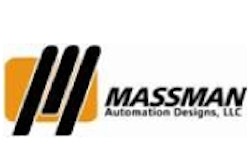I can’t think of a scenario more challenging where RFID is concerned.
But that didn’t stop this Lodi, CA, cooperative, which produces canned
tomatoes and fruit, from jumping onboard the Wal-Mart mandate back in
2006.
PCP’s Jim Farmer, director of distribution operations/logistics,
and Peter Wtulich, chief information officer and vice president of
information services, provided highlights on this RFID implementation
at RFID Journal’s EPC Connection event in October.
“Our products are really a worst-case scenario for RFID,” declared
Farmer.
After forming a cross-functional team and strategizing on its approach,
PCP began a rollout in early 2006 based on an upper management
commitment and a $400,000 investment for the first phase of its RFID
implementation. PCP would not take a “slap and ship” approach, deciding
that was an expensive, short-term view. And that’s despite obstacles,
including limited resources, low-margin products, powerful magnets used
in manufacturing, and excessive heat from the shrink wrappers used in
its packaging production operations. Also, its on-demand RFID system is
done in an operation that conducts 1,100 changeovers weekly.
“We wanted to turn the data into information using a scalable solution
that would integrate into our enterprise resource planning software,”
said Wtulich. In addition to collaborating on RFID with Wal-Mart, PCP
also partnered with OATSystems (www.oatsystems.com) and IBM
(www.ibm.com).
As an indication of how far along the company has come in the past two
years, the two presenters noted how a verify and reject step helped
lead them from a 33% read rate to a point where reads on its packaging
line are 99.7%—and the read rate on the product that it ships is 100%.
“Generation 2 RFID technology was a lifesaver,” noted Farmer.
In 2006, it did begin to use the data to address out of stocks. “With
RFID, you can see the movement of product through the supply chain,”
said Wtulich. “That’s phenomenal—[RFID] has ‘blown the roofs’ off
stores.”
PCP noted that there are seven data points in stores, or more than
three times the information it had before. Plus that information is
provided 48 times faster than non-RFID methods, with updates and alerts
every 30 minutes, Wtulich added.
PCP reported that with RFID technology, out of stocks improved more
than 100%, and its promotional efficiencies doubled. Currently, the
company is expanding the tagging of items and product lines.
“We’re
ready when any other retailer asks that we RFID-tag our products,” said
Wtulich.























